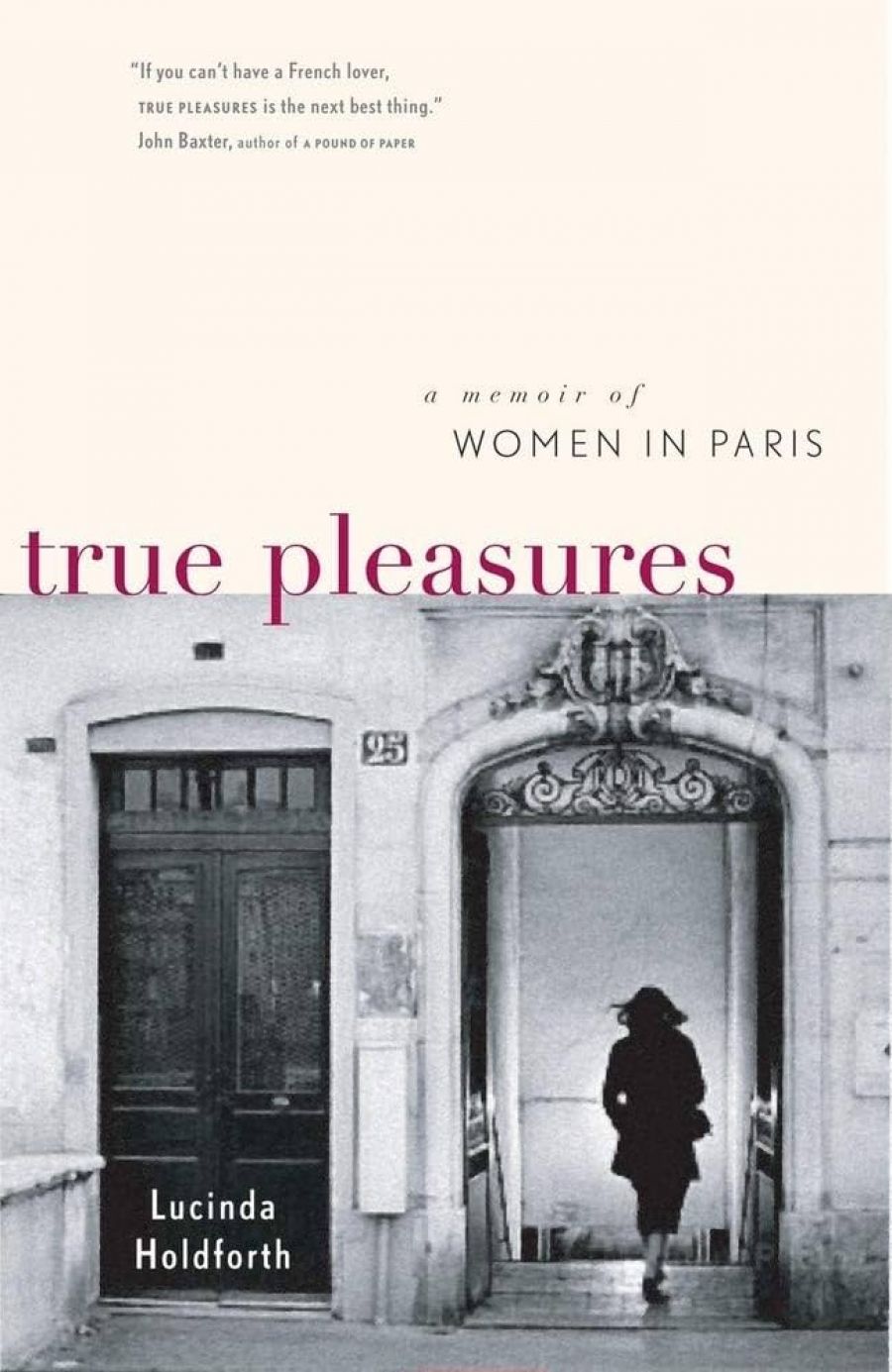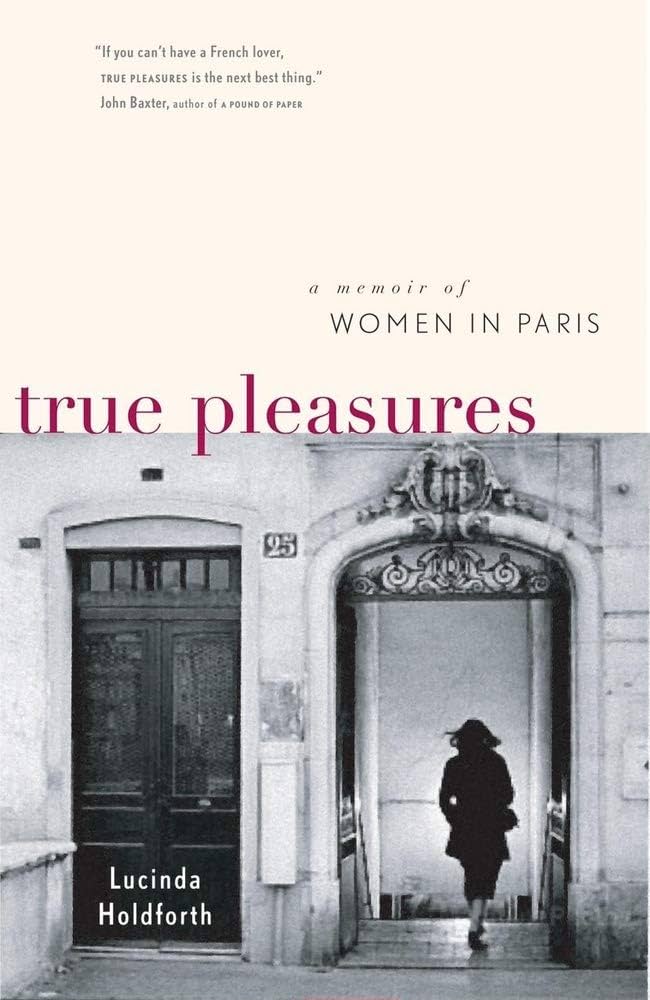
- Free Article: No
- Contents Category: Memoir
- Review Article: Yes
- Article Title: Invented Selves
- Online Only: No
- Custom Highlight Text:
In True Pleasures, Lucinda Holdforth gives an account of her own life refracted through vignettes of the lives of famous women that have lived in Paris. Some of her subjects are writers, some courtesans and some ‘salonnières’. Holdforth went to Paris on holiday to recover from a sense of stalemate in her life. She candidly admits to abject disasters in her love life and to a failure to feel at ease in her work, first as an assistant to the deputy prime minister in a former Labor government, then as a highly paid management consultant in the corporate world. She is discreet about her experience as a political adviser, but it is clear that she found the masculine ethos of Australian political life alienating:
- Book 1 Title: True Pleasures
- Book 1 Subtitle: A memoir of women in Paris
- Book 1 Biblio: Vintage, $22.95pb, 227pp
- Book 1 Cover Small (400 x 600):

- Book 1 Cover (800 x 1200):

Paris is the antidote Holdforth is seeking; there she feels fully accepted. In Paris, she argues, women can be themselves without having to deny ‘their invented selves, their created womanhood’. The qualities that Holdforth most prizes in her subjects are what she sees as their romantic readiness, their capacity for risk and the passionate life. Her subjects are ‘women who weren’t tossed around by life but grabbed it by the scruff of the neck and shook it hard’.
Given this, the inclusion of Diana, Princess of Wales, and Holdforth’s reading of her last day in Paris is provocative:
Sometimes I think of Princess Diana’s last night on earth, and quite frankly, could she have had a better one? She was on holidays, having cruised around the Mediterranean on a beautiful yacht. She had just been taken out to dinner at the Hôtel Ritz by a fabulously wealthy and attractive man who adored her. He had given her an enormous diamond as a gift. There must be many worse ways to go.
Holdforth’s argument is that Parisian culture, unlike those of Canberra and Sydney, celebrates the feminine and takes women seriously as intellectuals. Most of the chosen subjects – Edith Wharton, Nancy Mitford, George Sand, Colette, Gertrude Stein, to name but a few – fit the argument well enough but some obvious names are absent, presumably because they undermine it. What about Jean Rhys, who wrote negatively about her experience in Paris in the 1920s and 1930s? What about the Australian painter Stella Bowen? More recently, Sarah Turnbull’s memoir, Almost French (2002), tells of the difficulties she had in Paris as an outspoken Australian feminist.
Although I am sympathetic to Holdforth’s critique of Australian political culture and prepared to be open-minded about her romantic view of Paris, I was often startled by her comments. Some examples: the implication that Australian transvestites ‘dress as women to teach women something’, and the regret that in her experience of political life in Canberra ‘the bedroom was kept a long, long way from the office’. Granted that these quotations are isolated from a context where Holdforth is discussing the codes and discourses of power and the destructiveness of gender boundaries, but the book’s approach gets her into trouble. It is anecdotal, even gossipy at times, and the absence of a theoretical framework befuddles her argument. The essentialist deployment of the category ‘feminine’ is a fundamental problem. This is a matter of the perceived market for the book. It is not scholarly, so it does not meet the requirements of an academic audience, but it attempts a serious argument that becomes incoherent in a popular, chatty narrative.
Despite these reservations, I enjoyed Holdforth’s romance of the self abroad in Paris. I was disarmed by the book’s sense of immediacy, the delight in places, architecture and design, in food and clothes. Holdforth’s autobiographical subjectivity is constructed most beguilingly; she is the young Australian romantic in search of meaning, the fashion lover dressed in her sharp suit and bright red lipstick, shiny-haired and with fingernails freshly manicured, wearing her long shoes, entering restaurants with her stylish friend Rachel and sipping champagne. And she can be funny about cultural difference; her account of a French manicure is particularly amusing:
Into the room walks a brusque little woman who wheels over the trolley and sets herself up in front of me. She takes her time. Only when she is quite ready does she look up and say calmly, ‘Bonjour Madame’.
Clearly this is no fancy Sydney salon where they wrap you in blankets and burn calming oils and play new-age music, as if you are a particularly dangerous inmate in a progressive asylum. Here in Paris, beauty isn’t therapy, it’s business.


Comments powered by CComment